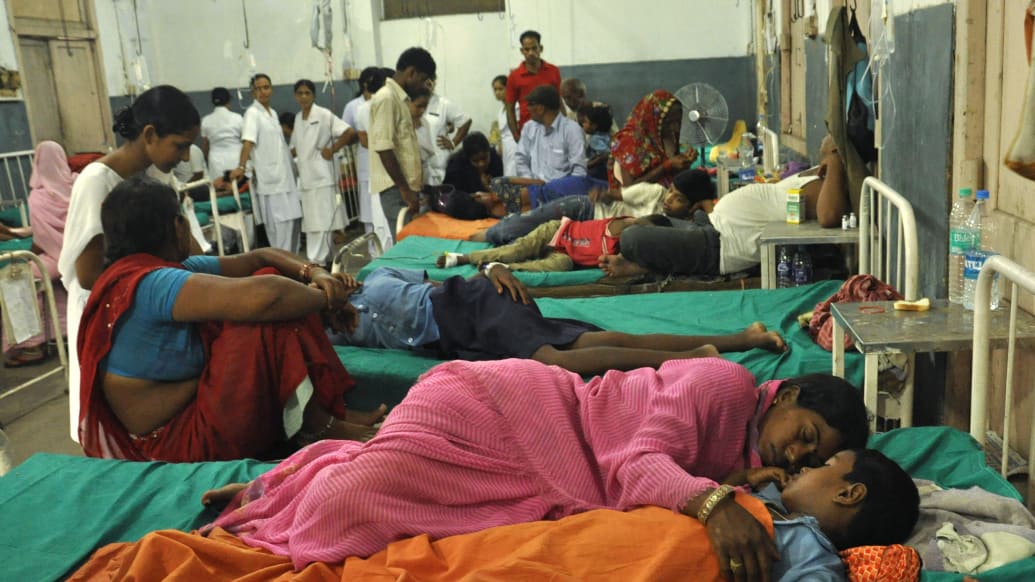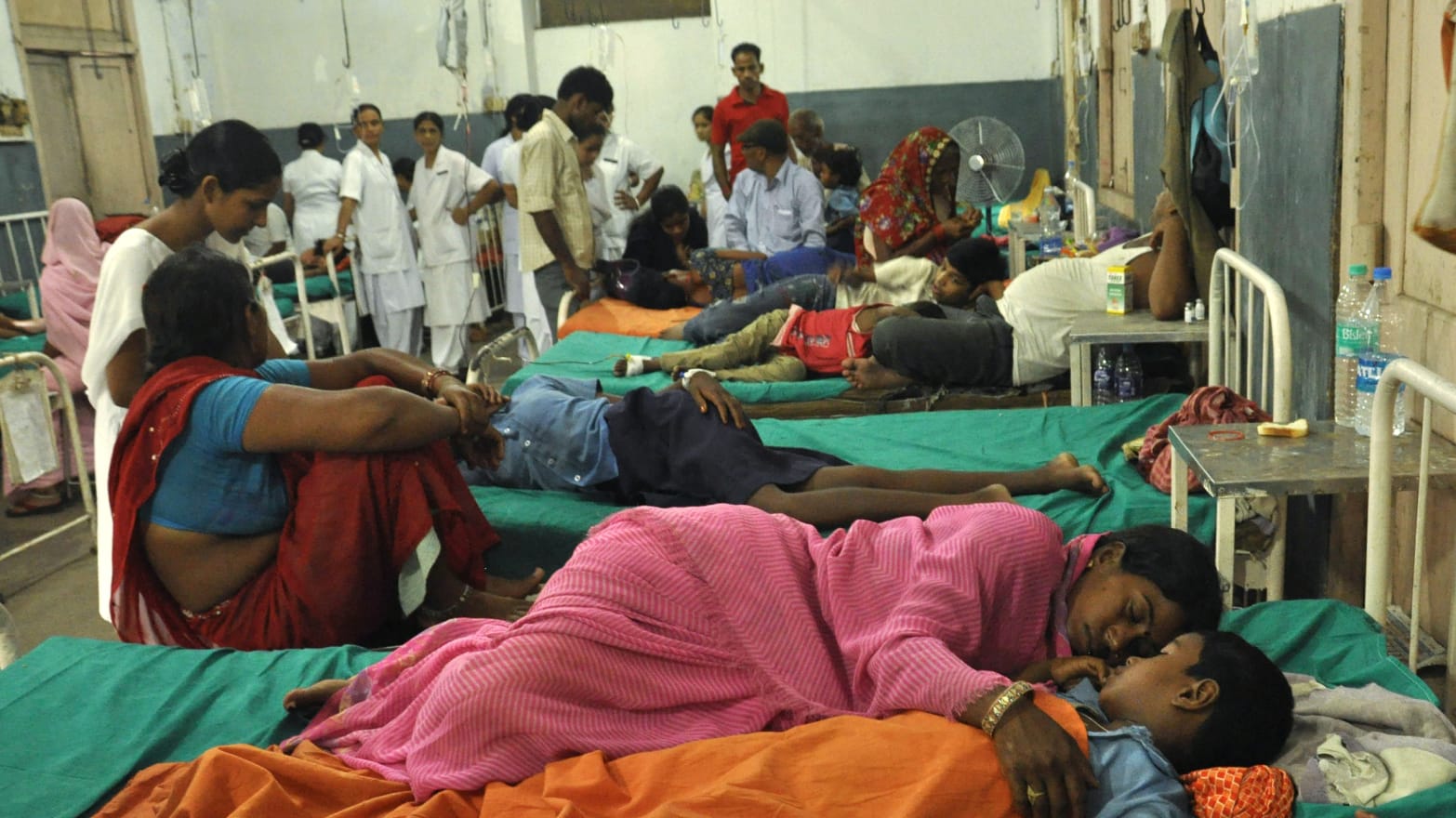On July 16, kids gathered for lunch in an Indian school. In a ghastly tragedy, over 90 of them were killed.
On July 16, kids gathered for lunch in an Indian school. In a ghastly tragedy, over 20 of them were killed.

It's one of those peculiar coincidences. On two separate days exactly nine years apart, lunch—we refer to it as the "midday meal" when it's given to kids in school—proved to be fatal to those kids, dozens of times over.
The first, in 2004. While the midday meal was being cooked, a fire broke out in the kitchen attached to a school in Kumbakonam in the southern state of Tamil Nadu. The fire spread rapidly to several classrooms. Its progress was aided no end by this terrifying (but only in retrospect) fact: the classrooms had thatched roofs. The resulting inferno killed more than 90 children.
The second, in 2013. (Two days ago as I write this). The midday meal was cooked and served to the kids at a school near Chapra, in the northern state of Bihar. After they finished eating, dozens began complaining of severe pain in their stomachs. At last count, 23 were dead—including the lady who cooked the meal and her kids—and many more were being treated at various hospitals. Turns out there were remnants of an insecticide on the food; in fact, it looks like it may have actually been cooked in a container used to store insecticide.
What is it about July 16 and midday meals, you may wonder. Answer: nothing, of course. The date is no more than a sad coincidence.
But there are other things worth noting.
In villages across India, schools set aside space to use as a kitchen. I've often seen small semi-permanent structures where food is cooked on a wood-fueled fire. If you look inside, you'll find walls black with soot, smoke to make you cough, and a few women getting lunch ready. Usually, it's just rice and dal. Maybe a vegetable. Maybe chappatis instead of rice. This is typical.
This one utterly basic school-provided meal is an important feature of schools that cater, generally, to poorer children. As you can probably guess, this meal provided to kids at midday is less a nod to nourishment than it is a mechanism to bring these kids to school and keep them there. For millions of Indian parents, a child away at school is still a luxury not easily afforded. So lunch becomes a big reason to send their kids to school. That's one less meal they have to worry about every day.
Is this a commentary of sorts on India? Sure. Still, it remains a calculation both parents and governments make.
And it is probably a typically Indian failing that in putting together that meal, few precautions are taken, few standards observed. Thatched roofs, a fire hazard? Who cares? Pass the veggies, dammit, and get the stove/oven/whatever going! Wash the veggies because they may not be clean, because they may even have traces of poison on them? What a thought! Let's just get this meal cooked, all right? Don't tell me what this vessel was used for, either!
And it is probably one more typically Indian failing that we overlook such laxity. Until the consequences blow up in our faces. Until kids die.
Months after the Kumbakonam tragedy, a far greater one slammed into the Tamil Nadu coast: the tsunami of December 2004. In several trips up and down that coast in the days and months afterward, I found many schools without roofs, their children attending classes out in the open. Yes, the tsunami had destroyed roofs. But many more had been removed by the school authorities themselves. Following the Kumbakonam deaths, the Tamil Nadu government banned thatched roofs, and the schools were now building concrete ones.
Similarly, I expect that this new tragedy in Chapra will result in new regulations about how the midday meal is to be prepared. No doubt the regulations will be followed diligently … for a while. Maybe even a week. Because we Indians know: as these things go, it will soon be business as usual in those kitchens. No time or use for regulations.
We want to keep kids in school, see. That's one of those ordained Good Things That Nations Do. Thus the midday meal. Nice in theory. Not so well-worked out in practice. Sometimes, even dangerous.
And yet, and yet … despite my cynicism, something I saw happening in those same schools after the tsunami does leave me with some twinges of hope.
Along with installing new roofs, one post-tsunami effort I ran across was also building new, better-ventilated kitchens. Fuel for the fires there would come from ...
… toilets.
I'm talking about what's called biogas, produced by treating the septic tanks attached to toilets.
The backstory, circa 2004: Most such schools do not have toilets. When they have to go, boys and girls alike walk out to the nearby fields. When puberty arrives, the girls won't go out to the fields anymore. Therefore, they don't come to school anymore. Simple.
So if you provide toilets, that's a way to keep kids—girls—in school. And the biogas from there is fuel for cooking lunch: another way to keep kids in school.
A thoughtful, innovative response to the fire and the tsunami? No doubt. Can we find just as innovative a way to enforce something as simple as washing vegetables thoroughly—every time? Perhaps so.
After all, I never expected to learn how roofs, toilets, insecticides, kitchens, biogas and puberty are sometimes connected. Maybe there's a route, somewhere in there, towards an end to calamities on July 16. And every day.

